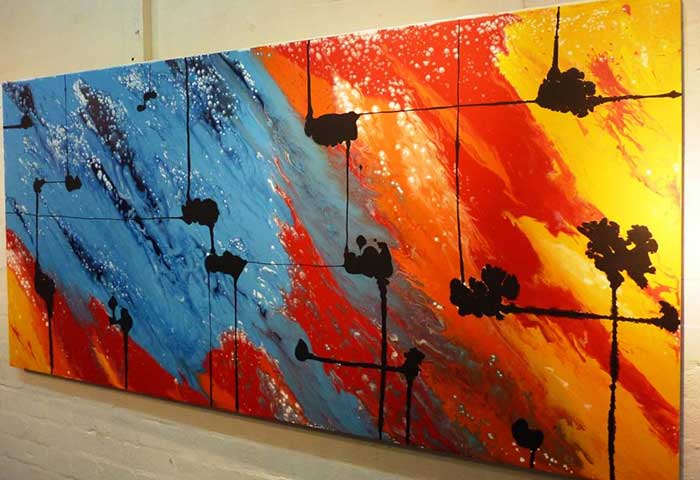[ad_1]
Ingredients of Watercolour Paints
Transparent watercolour paints are traditionally made from pigments that are finely ground in gum Arabic, which is a water-soluble gum acquired from a variety of the acacia tree. Gum Arabic is safe as it is completely non-toxic.
Other than Arabic gum, other binders are used such as fish glue, Tragacanth, crystallized sugar, dextrin, glycerin and honey. Clove oil is often used on cheaper paints as it prevents moulds from appearing on the painting over a long period of time. To help washes flow freely, ox gall are also be used.
Different Types of Watercolour Paints
The different types of watercolour paints display different characteristics that bring about a significant impact on your work.
Transparent, Reflective and Opaque Colours
Transparent colours, as the name suggests, are great for glazing and tinting. The colour beneath will be visible. These water colours can be specifically used for creating a glowing surface or multilayered washes, as in depictions of the reflective properties of water.
Reflective colours are those featuring reflective pigments adding more luminosity to your work. The cobalt range of blue and violet, viridian green, aureolin yellow and raw sienna display this quality.
Opaque colours are suitable for initial washes on the paper. They also serve good for accenting the painting, mixing, and in the creation of skin tones. Unlike transparent colours, using opaque pigments over other washes produces an undesirable chalky look.
Sedimentary and Fugitive Colours
Sedimentary colours are made from sediments including stones and clay and are therefore heavier and coarser, adjusting into your paper’s texture. Staining colours have more permanence as they stain the paper more, particularly the dye-based pigments.
The curiously named Fugitive colours have a tendency to change over time. They can fade away, darken to eventually become black or change colour. These unpredictable paints need to be avoided.
Student Watercolour Paints
Cheaper water colours are available in the Students’ range. These are generally used by beginners, and the reason they’re cheaper is that they are made using pigments with a lesser degree of refinement that are blended with a filler pigment that is neutral. These paints can look glossy thanks to the use of excess binder. While these inexpensive versions may resemble or simulate higher quality paint, they have less tinting strength. The more expensive colours are considered the genuine versions, ones which you should use if you’re serious about perfecting water colour painting.
Advice for Beginners
Watercolours may only require the medium of water, but they are the most complex paints to master. They are unpredictable and could look one way while wet and completely different when dry. There is also the risk of not knowing when to stop! Quite often beginners tend to keep working and working on their painting until it becomes one big collage of colour. Once mastered though, watercolour painting produces delightful artworks. To become proficient in this method it’s vital to know the different types of watercolour paints.
Knowing the different types of watercolour paints helps you plan your painting and theme accordingly. Expensive paints offer the better experience in every aspect. Now that you know the different types of watercolour paints and their varying effects on the paintings, it’s time to start painting.
[ad_2]
Source

